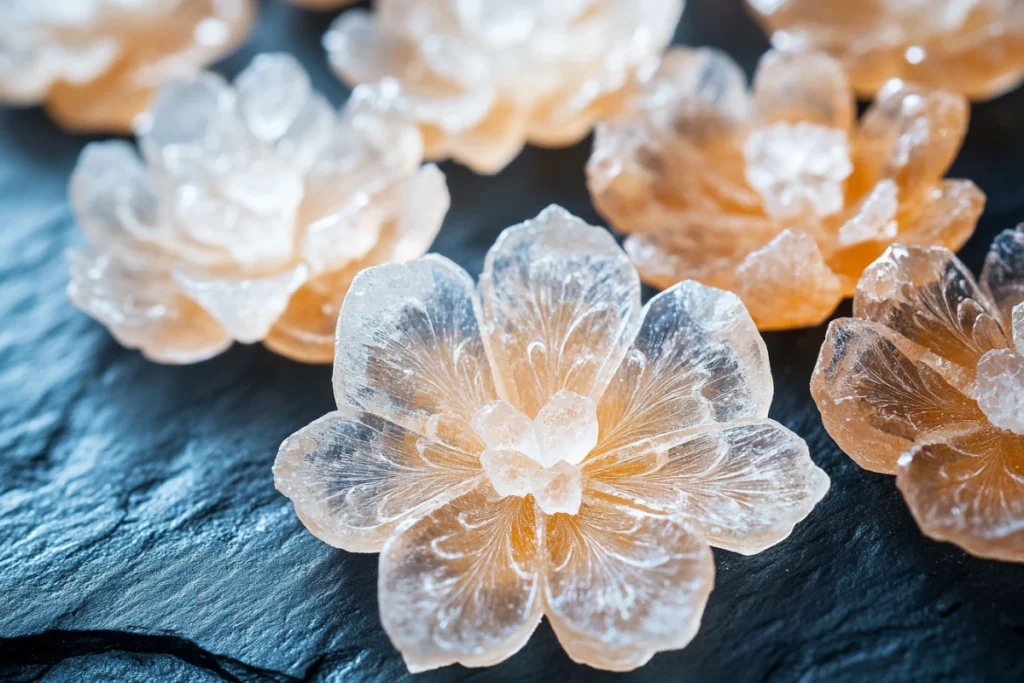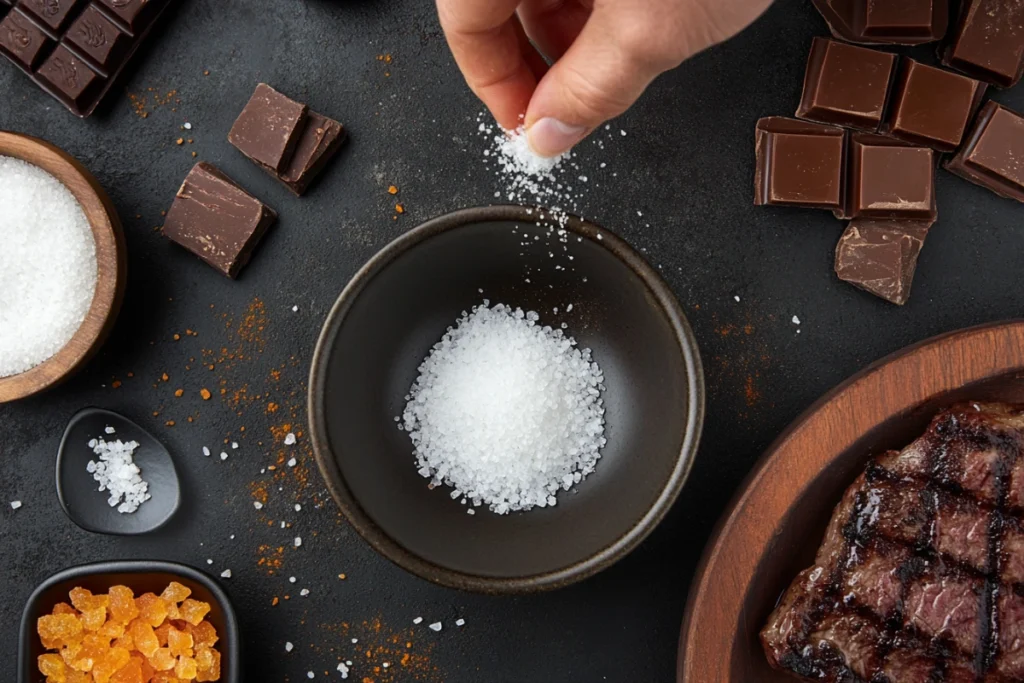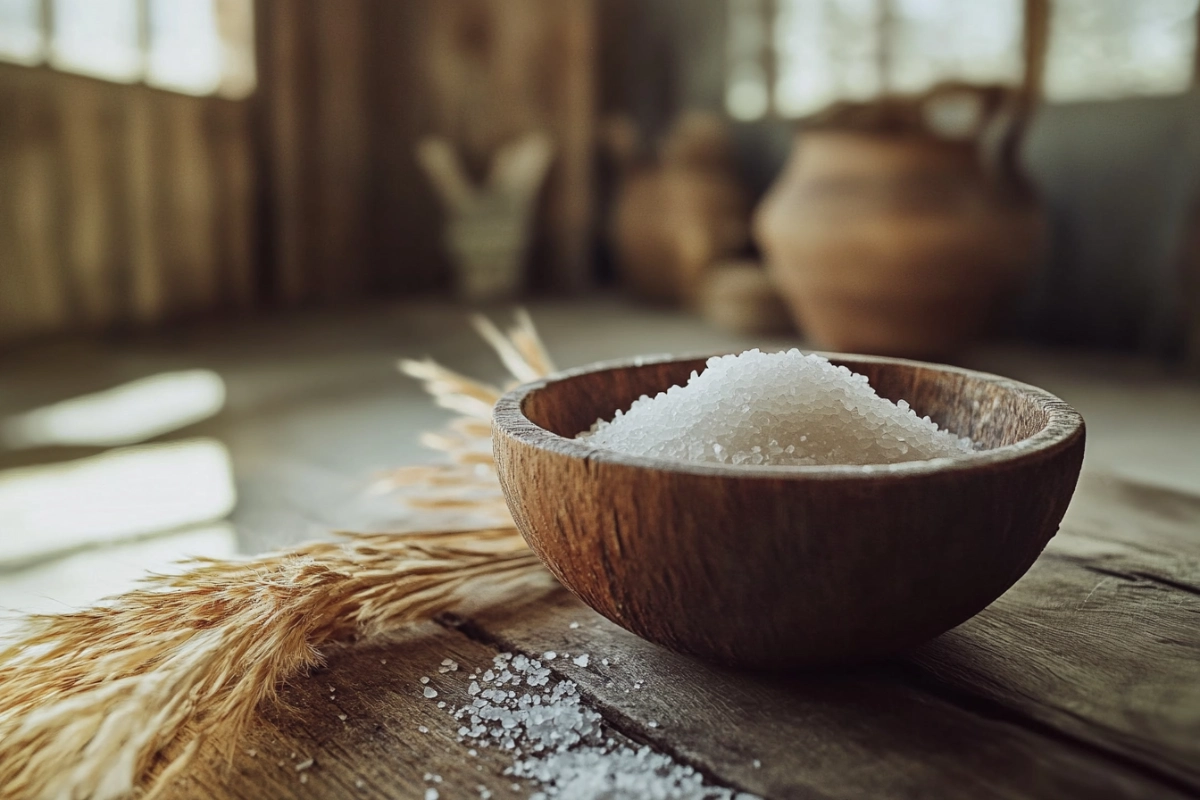Introduction
Fleur de sel, often called the “flower of salt,” is a culinary gem prized by chefs and food enthusiasts worldwide. This rare and artisanal sea salt has a rich history, unique production process, and remarkable culinary versatility. From its intricate harvesting methods to its nutritional benefits and extraordinary flavor profile, This finishing salt stands apart as a true luxury ingredient. In this article, we’ll dive deep into what makes fleur de sel so special, how it’s used in kitchens, and why it deserves a spot in your pantry.
“You’re in the right place if you’re a fan of seafood and salty flavors.”
What is Fleur de Sel?
Origin and Meaning
The name fleur de sel comes from French, meaning “flower of salt.” It’s not because this salt blooms like a flower but because its crystals form delicate, flower-like patterns when harvested. The origins of this treasured salt trace back to ancient salt marshes in regions like Brittany, France, where generations of artisans have perfected the craft of salt harvesting. Over time, This finishing salt
The Harvesting Process
Harvesting fleur de sel is an art that relies on nature’s rhythm. Shallow pools of seawater are left to evaporate under the sun and wind, forming a thin, delicate crust of salt on the surface. This crust is carefully skimmed by hand using traditional wooden tools, often during the late afternoon when conditions are just right. Only the topmost layer is collected, leaving behind coarser salts and impurities. This meticulous process contributes to fleur de sel’s high price and unparalleled quality.
The result? A salt that’s not just rich in flavor but also in history, offering a glimpse into the craftsmanship and dedication behind every pinch.
The Unique Qualities of Fleur de Sel

Texture and Appearance
What sets fleur de sel apart from other salts is its delicate, flaky texture and visually stunning crystal formations. Each grain looks like tiny blossoms, which is fitting for a salt named “flower of salt.” Its light, airy texture not only feels luxurious but also ensures it dissolves evenly on the palate. These unique characteristics make it a favorite for finishing dishes, where presentation is as important as taste.
Purity and Mineral Content
This gourmet salt is often hailed as one of the purest salts available. Harvested through natural processes, it retains a wealth of beneficial minerals like magnesium, calcium, and potassium—essential nutrients often stripped away in refined table salt. Moreover, it’s free of additives or impurities, offering a clean, unadulterated taste. This purity contributes to its status as a prized ingredient in gourmet cooking.
Culinary Uses of Fleur de Sel
As a Finishing Salt
Unlike ordinary salts, French sea salt is best used as a finishing touch. Sprinkling it over freshly cooked vegetables, roasted meats, or even scrambled eggs elevates the dish, adding a subtle crunch and enhancing flavors. Its distinct taste profile, a balance of saltiness with a hint of sweetness, complements savory dishes beautifully.
Sweet Applications
Surprisingly versatile, This finishing salt shines in desserts too. It pairs wonderfully with caramel, chocolate, and baked goods, providing a nuanced flavor contrast that takes treats to the next level. Imagine a sprinkle of fleur de sel on gooey caramel brownies or atop a silky crème brûlée—it’s magic!
The Health Benefits of Fleur de Sel
Nutritional Advantages
One of the biggest draws of fleur de sel is its natural nutritional profile. Unlike refined table salt, which undergoes heavy processing, fleur de sel retains essential minerals like calcium, magnesium, and potassium. These nutrients can support bone health, muscle function, and even cardiovascular well-being. Plus, because This finishing salt is so flavorful, you can use less of it while still achieving the perfect seasoning, helping to manage overall sodium intake.
Below is the nutritional content of French sea salt per 100 grams:
| Nutrient | Amount (Per 100g) |
|---|---|
| Sodium | 34,000 mg |
| Calcium | 140 mg |
| Magnesium | 90 mg |
| Potassium | 50 mg |
| Iron | 2 mg |
| Other Trace Minerals | Varies |
Lower Sodium Content
Another health benefit of fleur de sel is its naturally lower sodium concentration compared to some processed salts. This makes it a friendlier option for those watching their salt consumption. However, it’s worth noting that moderation is still key—like all salts, fleur de sel should be used sparingly to strike the right balance between flavor and health.
For more tips on integrating healthier ingredients into your cooking, check out our healthy recipe ideas.
Choosing and Storing Fleur de Sel
How to Identify Authentic Fleur de Sel
Not all salts labeled “fleur de sel” are created equal. To ensure you’re getting the real deal, look for products sourced from traditional salt marshes, like those in Brittany, France. Authentic fleur de sel will have a delicate texture, pure white color, and a clean, slightly sweet flavor. Avoid products with added preservatives or artificial whiteners, as these indicate inferior quality.
Storage Tips
Proper storage is crucial to preserving the texture and flavor of This gourmet salt. Keep it in an airtight container, away from moisture and direct sunlight, to prevent clumping or contamination. Glass jars with tight lids work best, maintaining the salt’s unique crystal structure. Following these simple steps ensures your fleur de sel stays fresh and ready to elevate your culinary creations.
Fleur de Sel in Culture and History
Historical Importance
French sea salt has deep roots in history, especially in regions like Brittany, France, where it has been hand-harvested for centuries. In ancient times, salt was so valuable it was often used as currency. french sea salt, being the most prized form of sea salt, symbolized wealth and prestige. Its rarity and labor-intensive production made it a coveted commodity in trade, particularly among European nobility.
Modern Cultural Significance
Today, This gourmet salt plays a prominent role in culinary and cultural traditions. It defines fine dining and serves as a staple in gourmet kitchens worldwide. Chefs and artisans frequently incorporate fleur de sel into products like salted caramels, specialty chocolates, and craft butters. This luxurious salt embodies quality and craftsmanship, earning its place as a favorite among professional chefs and home cooks alike.
FAQs about Fleur de Sel

What Makes French sea salt Different from Regular Sea Salt?
Unlike regular sea salt, which is coarser and collected from the bottom of salt pans, french sea salt forms a delicate crust on the water’s surface. Its unique harvesting process and flaky texture set it apart, offering a refined flavor and a lighter crunch.
Why Is Fleur de Sel So Expensive?
The high price of French sea salt comes from its labor-intensive production process. Harvesters collect it by hand in small quantities and under precise conditions, making it one of the rarest salts in the world. The significant time and effort required fully justify its premium cost.
Can this gourmet salt Be Used in Cooking?
Absolutely! While most people use This gourmet salt as a finishing salt, its versatility lets it enhance a variety of dishes, from savory meats to indulgent desserts. Its delicate flavor and unique texture work best when sprinkled just before serving.
What Are Some Popular Dishes Featuring Fleur de Sel?
Some iconic dishes featuring this gourmet salt include salted caramel desserts, chocolate truffles, and flaky, buttery croissants. It also pairs beautifully with grilled meats, fresh salads, and roasted vegetables for an extra layer of flavor.
Related Keywords and Synonyms
LSI and NLP Keywords for Fleur de Sel
When writing about french sea salt , incorporating related terms enhances readability and SEO performance. Some helpful keywords and synonyms include:
- Sea salt
- French salt
- Gourmet salt
- Hand-harvested salt
- Artisanal salt
- Natural salt crystals
- Finishing salt
- Premium sea salt
These terms not only add depth to your writing but also improve its discoverability for readers searching for information on high-quality culinary salts.
Why Related Keywords Matter
Using a variety of keywords helps capture the nuances of fleur de sel and its many applications. Whether describing its texture, flavor, or uses in the kitchen, these terms provide context and appeal to a broader audience interested in gourmet ingredients.
The Magic of French sea salt
French sea salt is far more than just a type of salt—it’s a symbol of craftsmanship, quality, and culinary elegance. Its unique harvesting process, delicate flavor, and versatility in both sweet and savory dishes make it a must-have for chefs and home cooks alike.
From its origins in ancient salt marshes to its modern role in fine dining, French sea salt represents a timeless connection to the natural world. Whether you’re sprinkling it on freshly baked cookies or a perfectly grilled steak, this artisanal ingredient transforms every bite into something extraordinary.
So, why not elevate your cooking with the magic of this gourmet salt ? This little luxury might just become the secret ingredient you never knew you needed.
Conclusion – Why Fleur de Sel Deserves a Place in Your Kitchen
A Culinary Treasure with a Rich History
French sea salt is more than an ingredient; it’s a celebration of tradition and nature’s artistry. Hand-harvested in tranquil salt marshes, this exceptional finishing salt has been cherished for centuries. Its legacy of quality and craftsmanship makes it one of the most prestigious culinary elements worldwide.
Elevating Everyday Meals
What truly makes fleur de sel special is its ability to enhance even the simplest dishes. Sprinkling it on roasted vegetables adds a delicate crunch and brings out their natural sweetness. On grilled meats, it highlights the flavors, making every bite juicy and flavorful. Desserts like caramel, chocolate truffles, and cookies also gain a sophisticated edge with a hint of flower of salt. Whether you’re cooking a casual lunch or preparing a gourmet feast, this salt transforms the ordinary into the extraordinary.
A Healthier and More Thoughtful Choice
Unlike heavily processed table salt, fleur de sel is packed with essential minerals like calcium and magnesium, offering nutritional benefits alongside flavor. Its naturally lower sodium content makes it a better option for those watching their salt intake. This purity and balance ensure you can enjoy bold flavors without compromising on wellness.
Bringing Joy to Your Kitchen
In a fast-paced world, this gourmet salt invites us to slow down and savor the details. Each delicate crystal tells a story of care, from its gentle harvesting process to its luxurious texture and taste. It’s not just a seasoning—it’s an experience, encouraging creativity and elevating the joy of cooking.
So why not let fleur de sel take center stage in your kitchen? Whether you’re a culinary pro or a home cook, this artisanal salt promises to transform your meals and inspire new culinary adventures.
For more tips on integrating healthier ingredients into your cooking, check out our healthy recipe ideas.

